Even today, there is ongoing debate among builders, safety experts and first responders about whether New York City is doing enough to reduce the risks of high-rise fire catastrophes—all as a new generation of supertall, super-skinny towers remakes the city’s skyline.
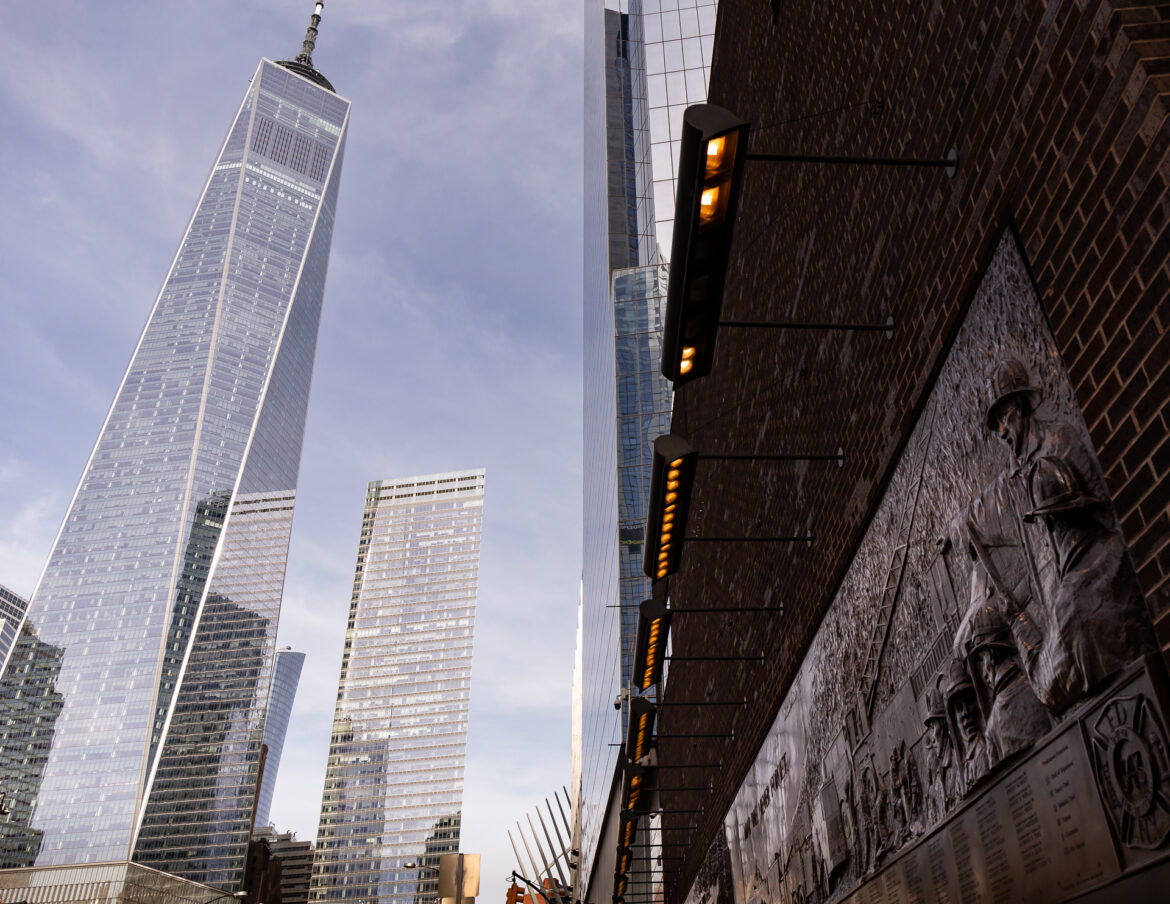
Adi Talwar
Skyscrapers in Lower Manhattan, including One World Trade Center, flanked by FDNY Engine/Ladder Co. 10 on Liberty Street.In a key scene in the classic 1974 disaster film “The Towering Inferno,” fire chief Michael O’Hallorhan shuffles wearily through the debris from a catastrophic fire in the tallest building in the world. He encounters soot-stained architect Doug Roberts, the man who designed the scorched skyscraper.
“You know, we were lucky tonight. The body count was less than 200,” the chief, played by Steve McQueen, says. “One of these days they’re going to kill 10,000 in one of these firetraps. And I’m gonna keep eatin’ smoke and carryin’ out bodies until somebody asks us how to build ‘em.”
The architect, who is Paul Newman and therefore still very handsome despite the soot issue, looks up at his doomed creation, then back at the chief. “OK,” he says. “I’m asking.”
“You know where to find me,” the chief replies through a wry smile. “So long, architect.”
Thus ended arguably the greatest disaster movie ever, and perhaps the ultimate Hollywood blockbuster—a film project as grandiose as the building whose demise it chronicles.
“The Towering Inferno,” which turns 50 years old on Dec. 16, was based on two bestselling novels and produced by two rival Hollywood studios in an unprecedented alliance. Produced by disaster-film impresario Irwin Allen—whose credits also include “The Poseidon Adventure”—it starred several Hollywood legends and an NFL running back of later infamy. It garnered eight Academy Award nominations: Outclassed in the Best Picture category by “The Godfather Part II” and “Chinatown,” the flick did manage to win three Oscars, including one for a truly dreadful original song.
Yet for all its Hollywood glitz and glamour, “The Towering Inferno” fed off very real concerns about the safety of the modern high-rise buildings that had begun to sprout across the United States in the early 1970s, like the TransAmerica Pyramid in 1972, New York’s World Trade Center in 1973 and what was then known as the Sears Tower in Chicago in 1974.
Many of those concerns persisted for more than two decades until the Sept. 11 attacks forced officials to reconsider basic notions about high-rise disasters.
Even today, there is ongoing debate among builders, safety experts and first responders about whether New York City is doing enough to reduce the risks of high-rise fire catastrophes—all as a new generation of supertall, super-skinny towers remakes the city’s skyline.
Blockbuster with a message
“The Towering Inferno” and the evolving conversation about skyscraper safety are the subject of a Dec. 13 conference at John Jay College’s Christian Regenhard Center for Emergency Response Studies. (The author is a participant.)
According to film historian Nat Segaloff, “Inferno” screenwriter Stirling Silliphant did extensive research into high-rise safety, visiting six U.S. cities during his writing process and learning about the limited capacity of exit stairwells, the risk that HVAC systems might fan flames and the potential for elevators be become death traps.
The result was the rare—in fact, the only—epic action movie to make repeated references to the building code.
“Listen, I don’t make message movies,” Allen told a New York Times reporter in 1974, “but as it turns out, I’ve got the hottest message in the world in ‘The Towering Inferno’: That there can be a terrible fire disaster in tall buildings.”
Many derided the film’s sensationalism. The Building Owners and Managers Association International asked Allen to include a disclaimer saying that the risks portrayed were fictional. “I said I would, if they put a plaque in every building saying ‘This Building Is Not Fireproof,’” Allen told The Times. “Well, they agreed not to do it, and I agreed not to do a disclaimer.”
While fire officials joined developers in dismissing some of the movie’s plot twists as highly improbable, many embraced Allen’s underlying message. New York’s top fire chief at the time, the legendary John O’Hagan, attended the film’s New York premier with a retinue of six FDNY rigs. O’Hagan had been raising alarm for years about the dangers of the new generation of high-rises popping up in New York City of the late 1960s and early 1970s.

Adi Talwar
FDNY Engine/Ladder Co. 10 on Liberty Street in the Financial District.Fire departments generally consider a high-rise building one that is taller than its highest ladder, typically six to eight stories. Since the first skyscrapers rose in New York, builders and rescuers have grappled with the unique risks fire poses in such structures. A modern steel-and-concrete building is, obviously, less vulnerable to fire than a wooden row house. However, just because the structure of a building is fire resistant doesn’t mean all the stuff inside—paper, furniture, carpets and so on—won’t burn, creating dangerous flames and even deadlier smoke.
When that happens in a high-rise, occupants and first responders both face challenges. The people inside a building might need to walk a long way down to get out. Firefighters, meanwhile, have to climb up all those flights, hauling gear. And water needs to get up there with them. The higher a building is, the more vulnerable it is to the impact of high winds and to the stack effect, in which the structure becomes a chimney, drawing in cool air from the ground level and pumping a deadly mix of heat and smoke up to the top floors.
In a tall building, firefighters depend on resources they don’t directly control, like sprinkler pipes, fire-service elevators and radio signals. “We are entirely dependent on our systems up there,” said retired FDNY chief Vincent Dunn, a respected authority on firefighting tactics.
Tragedy and response
Notions that “modern” high-rise buildings or their occupants were immune to fire did not last long. The enormous death toll from the infamous Triangle Shirtwaist Factory fire of March 1911 owed much to the fact that the fire and its victims were on the eighth, ninth and 10th floors of the building. In early 1912, the nine-story Equitable Life Building at 120 Broadway, which had been promoted as “fireproof,” was destroyed by a fire that killed six.
Those early tragedies triggered new laws, which were in effect when the skyscrapers that would define New York, like the Chrysler and Empire State buildings, began to rise in the 1930s. These buildings featured heavy structural elements of steel and concrete within a fortified building core—features that came in handy at the Empire State when a B-25 bomber crashed into it in 1945, killing 14 people but leaving the building’s structure sound.
In the late 1960s, evolution in building materials and the city’s code facilitated a new kind of skyscraper with glass-and-metal curtain walls, which developers were brashly confident could withstand old-fashioned threats like fire. (Holden’s character in “The Towering Inferno” portrays this bravado. “I don’t believe you’re familiar with the many modern safety features we have designed in this building,” he tells fire chief McQueen. “There’s no way for a fire on 81 to reach us up here. Not in this building.”)
However, there was already plenty of evidence that the new high-rises were quite vulnerable to flame. In 1970, fires at One New York Plaza and 919 Third Ave. killed five people. The World Trade Center wasn’t opened until ’73, but by early ’71 there had already been 30 fires at the construction site. It all led to the passage of Local Law 5, which required buildings over 100 stories to have either sprinkler systems or exit stairs that were pressurized to drive out smoke. The law seems a no-brainer today, but at the time, it had to survive a legal challenge from real-estate interests.
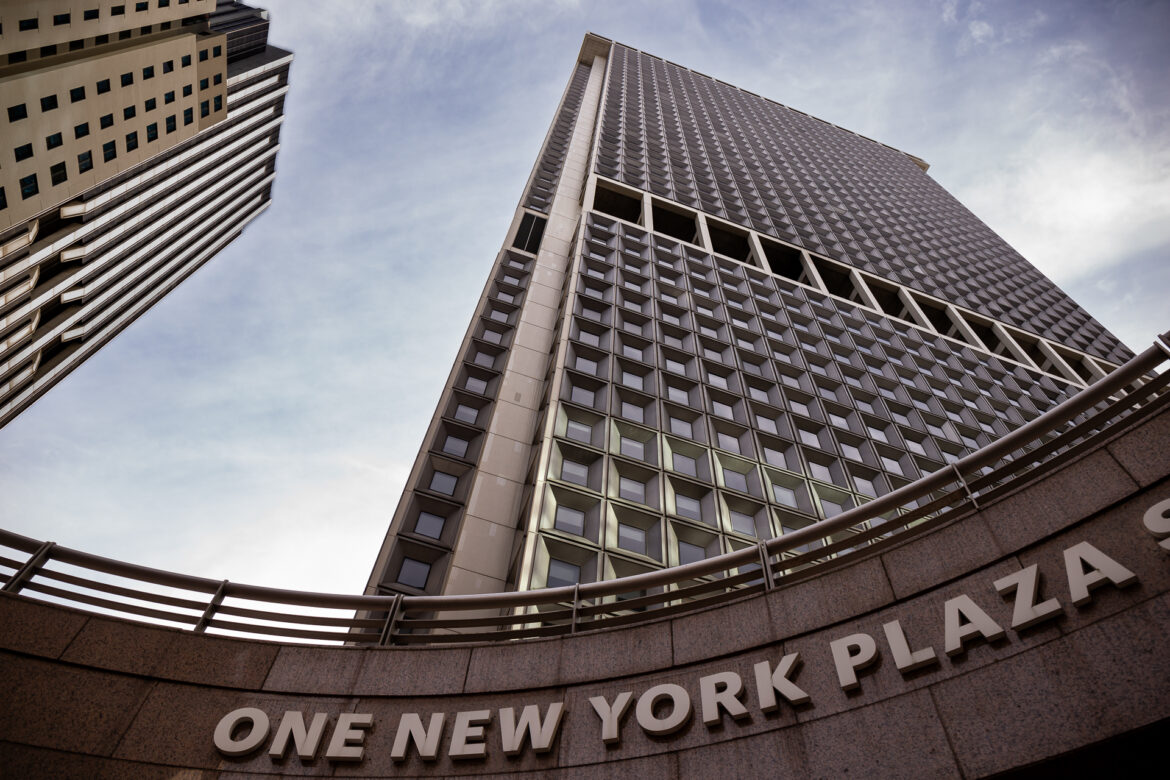
Adi Talwar
The 50-story One New York Plaza at Manhattan’s southern end.Sprinklers were important not just because of the vertical scale of the newer buildings but also their horizontal dimensions. While older skyscrapers featured smaller, contained offices, places like the WTC boasted massive, unobstructed floors. “These floors are open—40,000 square feet of open floor,” said Dunn. “But one FDNY hose stream can only extinguish 2,500 square feet.” In other words, modern office buildings present firefighters with potentially unbeatable fires unless sprinklers knock the blazes down early.
Deadly blazes at Harlem’s Schomburg Plaza in 1987, and at apartment buildings on Vandalia Avenue in Brooklyn and West 60th Street in 1998, reminded the city that high-rise fires, though rare, could be devastating.
These incidents weren’t enough, however, to force a rethink of the then-dominant strategy for managing high-rise blazes, called “defend in place.” The idea was that, since modern buildings were built to withstand and contain fires, evacuations were only necessary on the floors where fire broke out, and the ones immediately below and above.
The 1993 World Trade Center bombing was a wake up call to the risk of terrorist attack and the possible need to evacuate entire high-rise buildings—a task that many high-rise stairwells had not been designed to accommodate. WTC’s owners implemented some reforms after that incident, but the Sept. 11 attacks revealed the limitations of that approach.
The National Institute of Standards and Technology found that, had al Qaeda struck later in the day when the buildings were full, 14,000 people might have died “because the stairwell capacity would not have been sufficient to evacuate that many people in the available time.” Even with the Twin Towers only one-third to one-half full on Sept. 11, occupants coming down the stairs and firefighters heading up often got in one another’s way.
New York reacted to the tragedy by, for the first time ever, adopting a model building and fire code to replace the 1968 version, and agreeing to update the codes every three years.
“The building codes generally tend to be reactive: ‘If it ain’t broke, don’t fix it.’ That changed with 9/11,” said Peter Weismantle, a skyscraper architect whose portfolio includes Burj Khalifa in UAE, the world’s tallest building at present. Sept. 11 proved that terrorism was as much a threat to tall buildings as conventional fires. Incorporating that reality into the city’s codes was made easier, Weismantle said, by the experience many U.S. architects had gained when the global skyscraper boom shifted overseas during the 1990s.
“We had been spending the previous 10 years working in places like China and Europe. At that point, they didn’t have a lot of tall buildings but they did have very stringent and proscriptive fire codes about robustness of enclosure and the ability of fire units to use elevators to access the building,” he recalled.
The big difference between U.S. codes and their foreign counterparts, Weismantle said, is that U.S. codes embrace new technology as a way to reduce reliance on older safety measures. For instance, “in the U.S. since the mid-70s we have had great faith in sprinklers for fire suppression and active alarm systems. That allowed us to relax other elements, like the robustness of stair enclosures. It’s a balance that occurs,” he said.
Builders “are going to meet the code, but there’s always more than one way to skin a cat,” Weismantle added. “Our clients want to build economic buildings. They want to build fast. And that all figures in.”
Slow progress and new perils
Even after Sept. 11, high-rise fires still created deadly spectacles. A 2007 fire at the Deutsche Bank Building killed two firefighters and nearly led to a criminal indictment against the Bloomberg administration for failing to inspect the structure.
Meanwhile, the regulation changes triggered by Sept. 11 were implemented very slowly, reflecting the cost and difficulty of retrofitting existing buildings. Owners were given 15 years to comply with Local Law 26 of 2004, which required most buildings over 100 feet to install sprinklers even if they had been “grandfathered” out of earlier sprinkler laws. The vast majority of buildings missed that deadline.
Today, five years later, one in five buildings covered by the law is still not compliant. “The good news is that every month DOB is continuing to see more and more buildings come into compliance with Local Law 26,” thanks to the agency’s enforcement efforts, a Department of Buildings spokesman tells City Limits. “The department expects this trend to continue, and we expect the compliance rate to continue to move closer towards 100 percent as time goes on.”
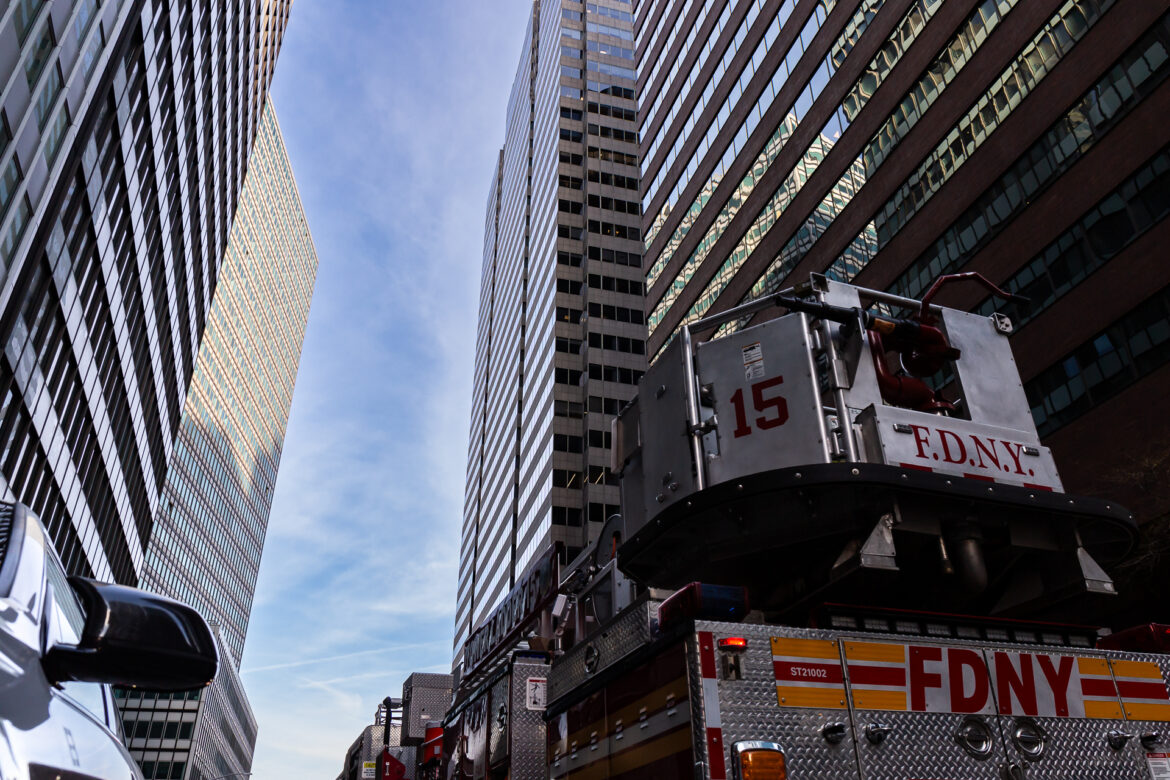
Adi Talwar
FDNY responding to a gas leak call at a high-rise on Water Street in Manhattan.The Real Estate Board of New York (REBNY), which represents developers, says compliance has lagged because “some buildings have offices that have not been vacated since the law was enacted in 2004 and that has made it very challenging for owners to fully comply.”
“Our understanding is that many noncompliant buildings are close to full compliance and are not simply ignoring the law,” the REBNY spokesperson added.
As regulations and enforcement play out, New York City—currently ranked third in the world for its skyscrapers, with 318 buildings over 450 feet—is only getting more vertical. Of the 20 tallest buildings in New York, 12 were built in the past six years. The combination of a city with an aging population, significant numbers of obese and disabled residents and increasingly tall buildings creates the potential for even more challenging high-rise evacuations.
The glamorous buildings that define the city’s ever-changing skyline are not necessarily where the risks of high-rise living are most keen. A 2022 fire in a 19-story tower within the Twin Parks development in a working-class section of the Bronx killed 17 people. In response, the City Council took quick action, passing laws within a few months that tightened regulations around self-closing doors and space heaters, both of which contributed to the Twin Parks tragedy.
However, some safety experts were disappointed that the city didn’t address other major flaws exposed by the fire. One was that the Twin Parks fire alarm system didn’t communicate with the FDNY. Another was the fact that the building in question was still not required to have sprinklers.
Joann Ariola, a Queens councilmember, chairs the committee on fire and emergency management that crafted the post-Twin Parks legislation. She told City Limits that the focus now has to be as much on firefighting resources as on building requirements.
Engine companies typically have only four firefighters, but in the busiest areas of the city they boast five-person crews, with the extra member there to stretch hoses and help the rest of the team get water from the pumper to the flames. “The fifth firefighter is an incredibly important component of fighting fires, particularly in larger buildings,” she said, adding that increasing FDNY staffing will be a priority in the upcoming city budget.
At a recent fire committee hearing, Jim Brosi, head of the fire officers’ union, raised concerns about a mismatch between the location of fire companies and new areas of high-rise development in the city, like Hudson Yard and the proposed Willets Point development.
“What you will see in the Citi Field/Flushing area is you will see a depletion of services, a dramatic safety impact because those units cannot absorb any more running,” Brosi said. “The distance from those places will increase response times and the vertical impact of those high-rise buildings will make it very difficult to reach those occupants.”
Ariola says the recently approved City of Yes housing development plan will only increase the need for more FDNY units equipped to handle high-rise emergencies.
Jim Long, a spokesman for the FDNY, said in a statement to City Limits that the presence of the fifth firefighter is negotiated between the firefighters’ union and the city. Long added that the FDNY adds additional staffing when severe weather or special events occur.
“As for routine responses and operations we have redundancies built into our response matrix,” Long continued. “That means on the initial reports of a fire in a high-rise residential building additional units are assigned and have predetermined responsibilities that address operations in the identified building.”
Hollywood and a ‘holistic’ code
Overall, fatal fires are much less common in New York City than when “The Towering Inferno” came out. Civilian fire deaths dropped from 305 in 1970 to 74 last year. Fires also are becoming less and less common: Over the past five years, the number of structural fires dropped 25 percent. However, the share of fires considered “serious” increased by 50 percent over the same span.
Meanwhile, the city’s enforcement of its fire code appears to be getting far less aggressive. In fiscal year 2019, the FDNY wrote more than 7,000 code violations; in fiscal 2024, it issued just 2,017.
Ariola says the city needs to hire more inspectors to make sure the recently passed fire-safety laws are actually implemented. She also believes more regulation is required, both to address the risks of lithium-ion batteries and to acknowledge the difficulties of fighting fires in an increasingly vertical city. One idea: equipment rooms located every few floors in high-rises where the FDNY could stash air tanks and other supplies so it doesn’t have to haul it all up from ground level.
Of course, resource rooms would mean less rentable space for builders, and therefore less profit. Fire protection measures can also increase cost to renters, reducing affordability. There’s always been a tension between costs that must be borne every day by building owners and tenants, and benefits that might only be felt when a rare but life-threatening catastrophe strikes.
“NYC has the most stringent building and fire codes in the country and the codes are updated regularly through a consensus driven stakeholder process,” the REBNY spokesperson said. “The next fire code revision is expected to kick off in 2025 and we look forward to participating in the process, which will be a good opportunity to consider important issues [like] e-batteries and energy storage systems among other topics.”
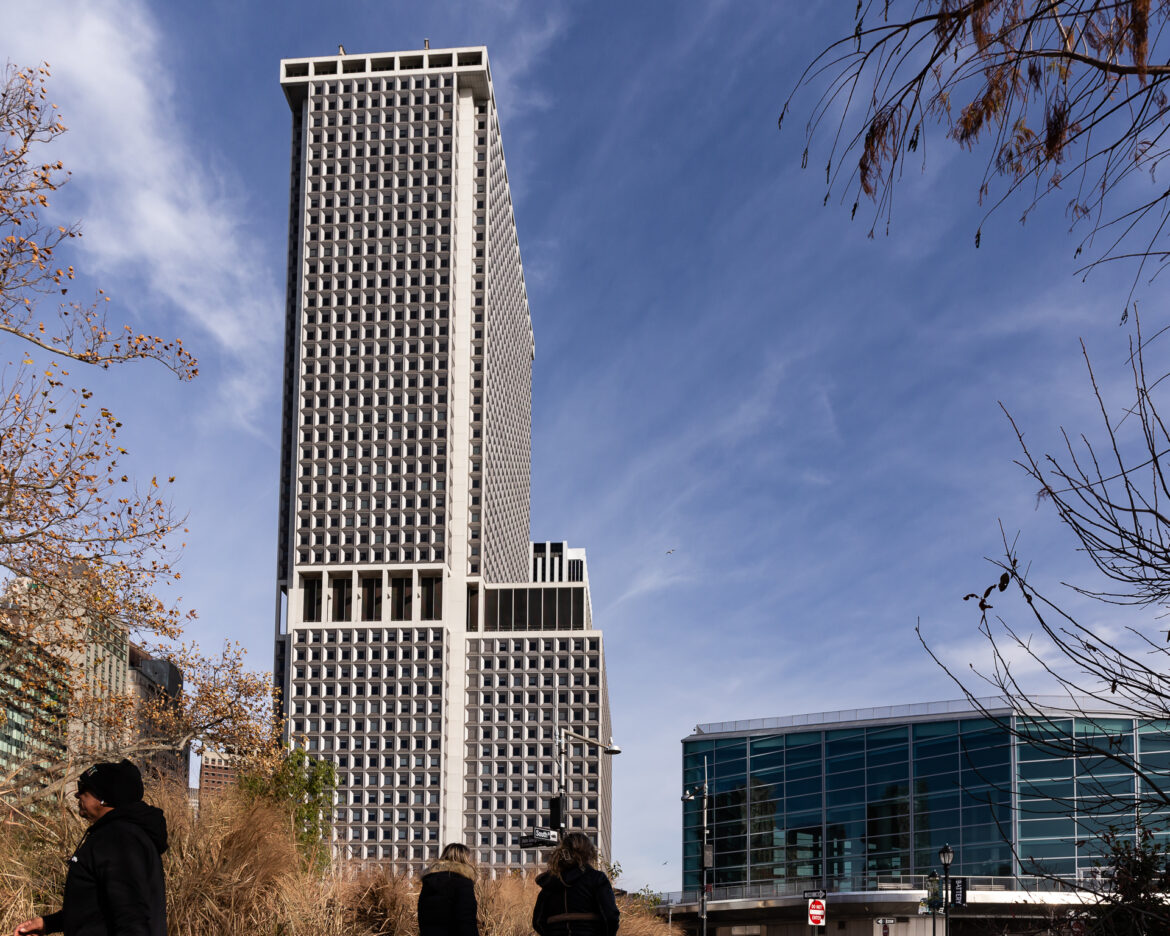
Adi Talwar
The 50-story 1 Water Street office building in Lower Manhattan.Builders tend to want to address risks efficiently: Would wireless technology, for instance, permit the city to stop requiring so much hard-wiring of alarms and other safety components? Fire-safety advocates, on the other hand, want redundancy, so that occupants and rescuers are protected even if a major element fails—if, say, the WiFi goes out, or the sprinkler pipe’s been cut, or the radios don’t work.
“I would say, big picture, a lot of things are much better” in today’s New York code, said Ali Ashrafi, a fire-engineering expert with the international firm Thornton Tomasetti. “All the fire safety elements of the code have improved and are much more consistent. However, I think there’s more to look at in terms of holistic design. And we need to stress-test the design to understand what happens if one of the components fails.”
Today’s high-rise safety debates are often highly technical. Inspired by London’s Grenfell high-rise disaster, for example, a major change in New York’s 2022 building code pertained to the use of things called “high-pressure laminates” and “fiber-reinforced polymers” in external building cladding.
Jake Pauls, a pioneering expert on the science of evacuations, says his chief concern these days is the design of handrails in exit stairs. He points to experimental data from fire drills and evidence from real emergencies to argue that evacuees need a handrail that extends just beyond the last step in every flight of stairs in order to keep descending smoothly.
“The latest edition of the New York City code has partially solved with effective language the problem of prematurely cutoff handrails,” Pauls said. “But here’s the problem: That only applies to new construction.” In older buildings, he said, “The handrails on their exit stairs stop prematurely.”
For people like Pauls, one evacuee’s momentary pause on each stair landing must be multiplied by thousands of people traversing dozens of flights of stairs on their way to safety. It makes one wonder: In the fictional world created by Irwin Allen 50 years ago, did Paul Newman’s architect ever actually contact Steve McQueen’s fire chief after the closing credits? And did they talk handrails?
Allen never made a sequel, so there’s no way to know. But Ashrafi says those conversations have to happen in real life. The final scene of “The Towering Inferno” actually delivers a key message, he believes. “All the stakeholders have to be talking together to come up with the right answers.”
To reach the editor, contact Jeanmarie@citylimits.org.
Want to republish this story? Find City Limits’ reprint policy here.



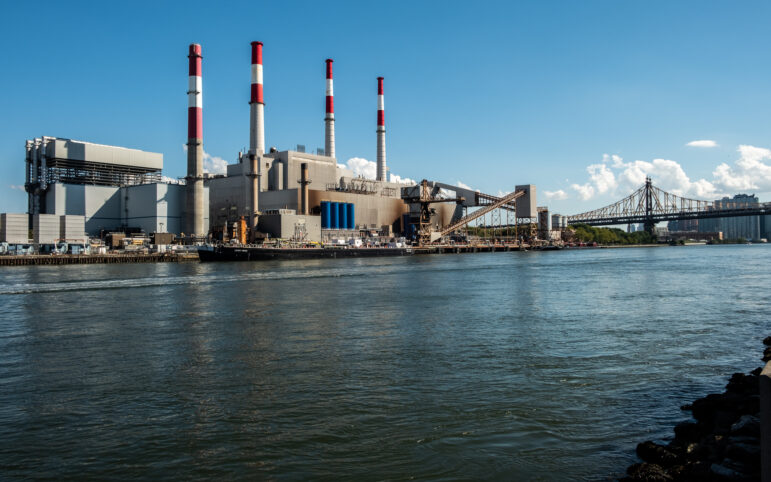
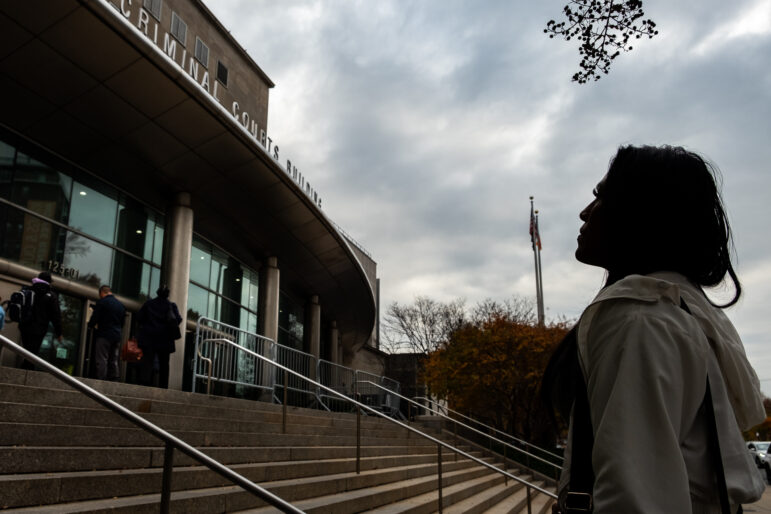
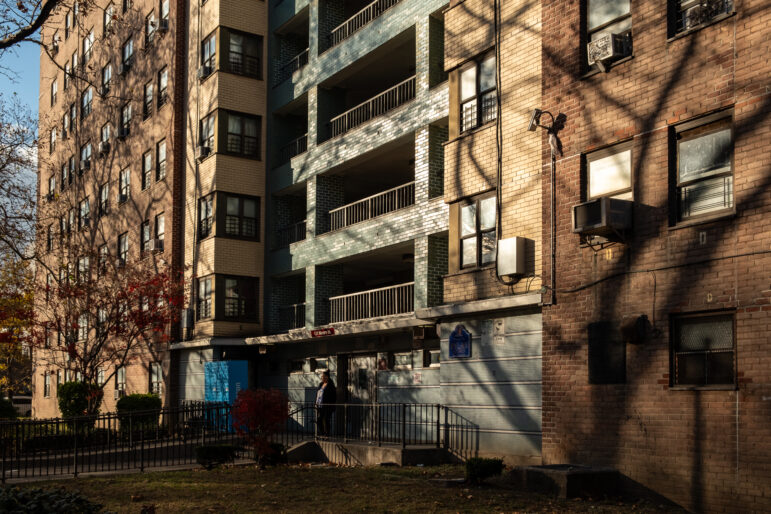



2 thoughts on “Fire-Proofing New York’s High-Rises, 50 Years After ‘The Towering Inferno’”
Very interesting. Irwin Allen was my mother’s cousin!
Nice, comprehensive, and fair article. Thank you for the quality journalism and thanks to the FDNY for their work.